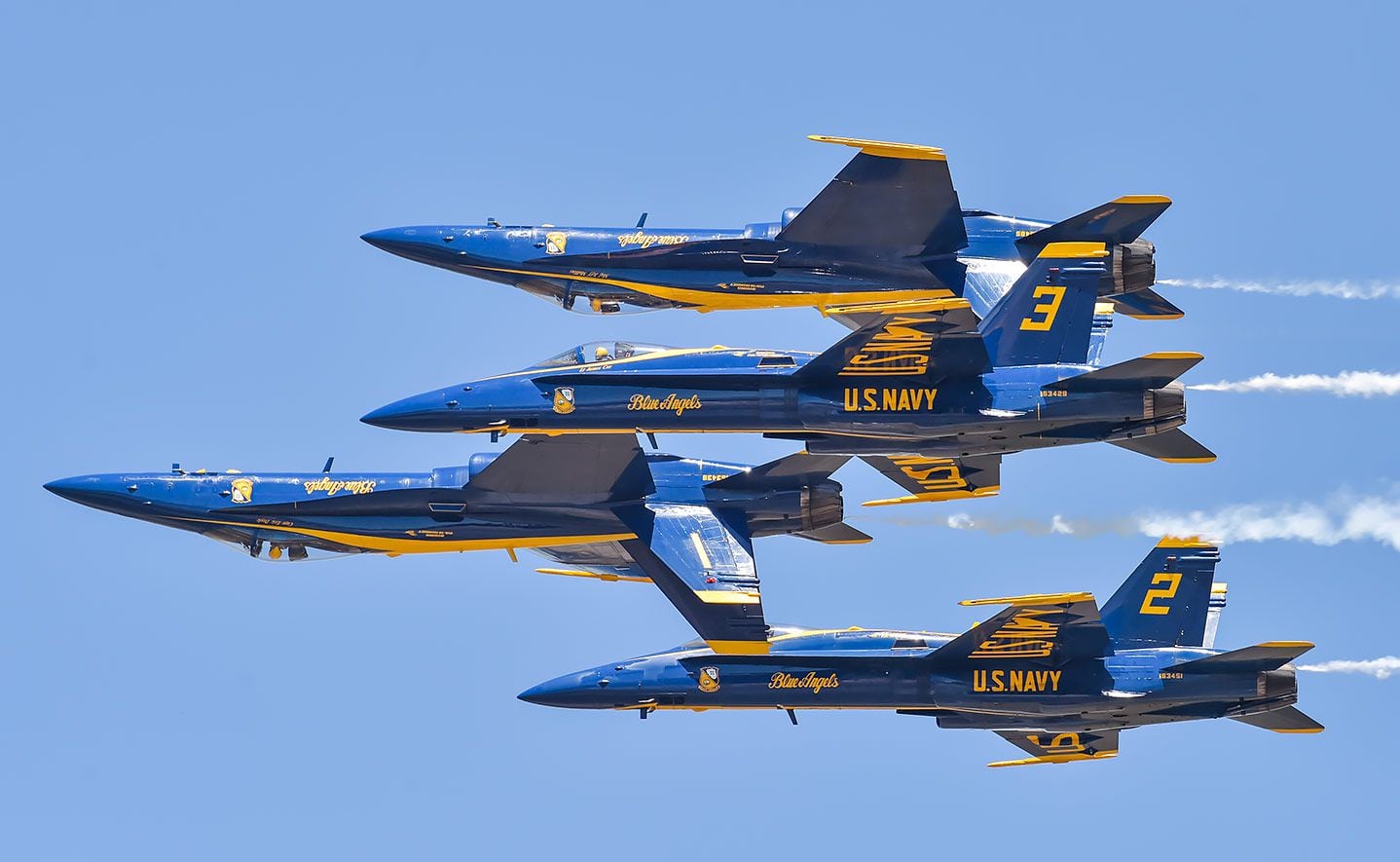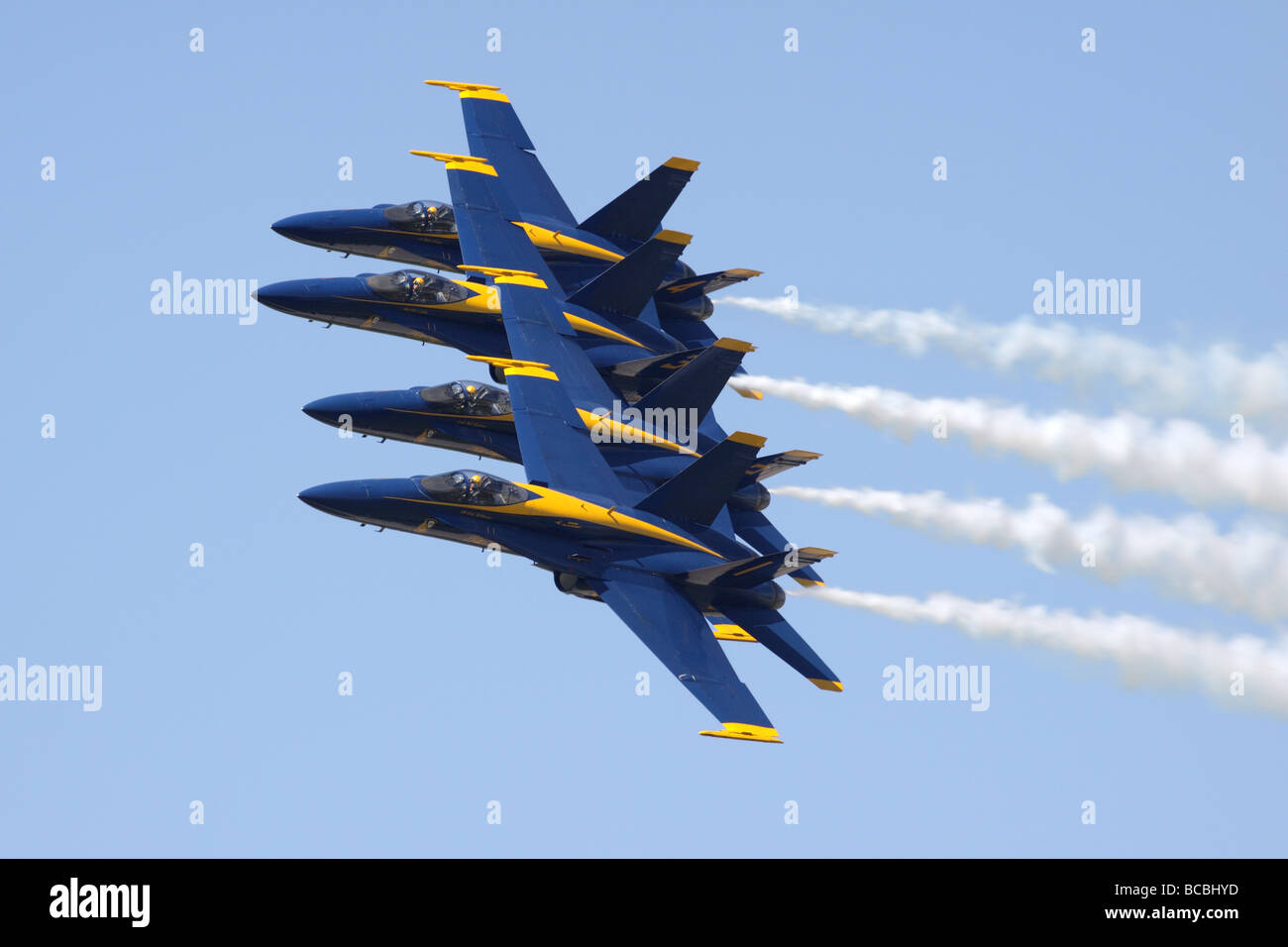All Blue Angels Aircraft - Our website uses cookies to provide a better, faster and more personalized site experience. By using our site you consent to our use of cookies. Read our privacy policy for more information.
To mark the transition from Legacy Hornets to the Super Hornet, the Blue Angels used both types of aircraft for their final flight together on November 4, 2020. Here, aircraft No. 1, an F/A-18C flown by Cmdr Brian Kesselring, is next to one of the new F/A-18E Super Hornets. (Photo by Petty Officer 2nd Class Christopher Gordon/Navy)
All Blue Angels Aircraft

(This story by Christopher P. Cuves originally appeared in the April 2021 issue of Military Staff, a newsletter available to all Premium and Life members. Learn more about the newsletter here; learn more about joining here.)
Sf Fleet Week Mainstay The Blue Angels Have A Deadly History
They are the stars of every air show. Thousands of heads shot up into the sky behind them as they ran in splits. The eyes darkened like a plane but disappeared, then widened as they pointed to the ground.
The ears ring as the plane approaches, the noise increases as the powerful machines approach. Then the ground shakes and shakes as the blue planes descend in front of the crowd, their engines burning hot as they pass and take off again.
This visual experience is the heart of the Navy's air show team, known worldwide as the Blue Angels. It is a passion that inspires soldiers and civilians, young and old, north, south, and everywhere else.
"They're not the only face of the Navy, in a very visible way," Capt. Russ Bartlett, USN (Ret.), former "chief" who commanded the Blue Angels from 2002 to 2004.
Return Of The Blue Angels
"What it really is is a connection to the community, a little bit of what the Navy and Marines are responsible for." And to instill interest, especially in children, from an early age," he told the military officer.
This year is a milestone for the Blue Angels, marking 75 years since the group was founded. During the show, viewers can see the group's newest aircraft, the F/A-18E Super Hornet.
The first group included the Grumman F6F-5 Hellcat fighter, but the more powerful GrummanF8F Bearcat, pictured, became the standard demonstration aircraft. (water photo)

The Grumman F9F-5 Panther, pictured, was the group's flagship in the early 1950s. The first F9F-2 model (1949-1950) was the group's first fighter jet. (water photo)
Blue Angels Return To Nas Oceana In 2023
The Grumman F11F-1 Tiger, pictured, replaced the F9F-8 Cougar in 1957 and flew with the Blues for 11 years. The aircraft was redesignated the F-11A in 1962. (Navy Photo)
The McDonnell F-4J Phantom II was the blues plane for the Vietnam era. After two serious accidents in 1973, one of which killed three pilots, the decision was made to retire the Phantom. (water photo)
The Douglas A-4F Skyhawk II, smaller than the Nifty and Phantom, entered service with the Blues in 1974 and stayed with the club for 12 years. (spring photo)
The McDonnell Douglas F/A-18A Hornet, pictured, became the Blues' demonstration aircraft in 1986, joined in 2010 by the upgraded Boeing F/A18C. Together, the "heritage" of the Hornets flew for 34 years. (water photo)
America's Angels: U.s. Navy Blue Angels Celebrate 75 Years
Either way, the Blue Angels have succeeded in their initial mission to raise awareness, pride, and spirit among the American public about aviation and sailing.
Being so popular, they are featured in many air shows around the country, starting in March most years and going through November. A full season can mean doing 34 shows, the number of events he is part of during 2019.
The arrival of the COVID-19 epidemic in 2020, of course, led to the cancellation of many air shows as lockdowns and public distractions replaced large public gatherings.

But last April, the Blues and their Air Force team, the Thunderbirds, joined in a show of unity to do a series of flights around the country. Called Operation America, the intense, coordinated effort is to keep medical workers, first responders and other essential workers safe and well during this pandemic.
Best Flyovers From Operation America Strong
Thousands of people came out from everywhere to watch and cheer on the plane, and social media was filled with videos of excitement and demonstrations. Along with many other service aircraft, the effort continued through the summer and boosted morale wherever the aircraft appeared.
The 2020 flight season is a variation on the Blue Angels theme, since the air show team was formed in early 1946 under the leadership of Naval Operations Administrator Chester Nimitz. The man who led the Navy's operations in the Pacific during World War II understood that, after the war ended and millions of soldiers returned to civilian life, it was necessary to make an effort to keep the Navy in the public eye.
Nimitz "wanted something visual, visual, professional and exciting, that would appeal to people," Bartle said. "He wants people to know what the Navy is."
In March 1946, Lt. Cmdr. Roy "Butch" Voris, who fought during the war, formed a group at Naval Air Station Jacksonville, Fla. On June 15, 1946, at their home base, flying a Grumman F6F-5 Hellcat, the group made its first demonstration.
Blue Angels Jets Images, Stock Photos & Vectors
What was then known as the Naval Aeronautical Organization was the second only aviation organization in the world, established by the French Air Force in 1931.
The name Blue Angels was used in July 1946 and was suggested, according to the group's history, by Team Right Wing pilot Lt. Maurice "Wick" Wickendole. In August of that year the group made its first aircraft change, switching to the high-capacity Grumman F8F-1 Bearcat, the Navy's fastest-growing fighter jet at the time. In the late summer of 1949, the team traded in their Bearcats for their first aircraft, the Grumman F9F-2 Panther.
On the other hand, the team created a system for the show. Bartlett recalled the Voris meeting in October 2004, when the group paid tribute to the 85-year-old former chief executive. Voris died the following year.

Bartlett said: "I went to dinner with him and I asked him, 'Chief, so in 1946, you were flying a manned plane, it was a new thing,' Chester Nimitz said. So you understand. How do you decide how close an airplane is to fly?
Shoreline Area News: Destinations: Blue Angels Launch At Jet Blast Bash Festival August 6 7
"He says, 'Well boss, if we hit each other, we know we're close. But if we don't hit each other, we're far apart.'"
As the show progresses and the plane gets bigger, faster and more powerful, the team experiences accidents due to various reasons, from falling birds to equipment failure, to mid-air, both in practice and during the show. 20 pilots and one crew member have died, the first in 1946 and the most recent in 2016.
Perhaps the biggest accident occurred in July 1973. The team switched to the McDonnell F-4J Phantom II in 1969, but the large aircraft was too large and difficult to fly in the close, precise manner that the Blues do. The last of many tragic events occurred on July 26, 1973, when a two-seater crashed in Lakehurst, N.J., killing three people, including the captain and commander, Lt. Cmdr. Marvin "Skip" Umstead.
Other times have been canceled, but the Douglas A-4F Skyhawk is smaller and could replace the group. Security measures have also been changed.
Blue Angels Precision
The force begins each year during winter training at the Naval Air Facility in El Centro, California, where pilots fly two or three times a day, while detailed, support staff enough to go.
"When the pilots go on the plane, the crew is filming the whole show," Bartlett said. "Then the debriefs are really where the magic happens. People will go on and go through each frame by frame - it's usually a two or three hour briefing for each 35 minute flight. . So it's cruel. But this is where you know what you do well and you need to work on it.
"Everybody is expected to contribute. There is no fee. It doesn't matter if you are a leader or a service provider, you are expected to contribute and help determine what each of us is doing. "Tomorrow can be better," Bartlett said. "It's a culture that's different from any other department I've been in. Everyone can and is expected to speak up. If you want to call out the boss because he did something wrong, you are doing it for the good of the team.

"We break it down by base, whether they're support staff or pilots," Cmdr. Brian Kesselring, the team leader and flight leader, told the military officer.
Blue Angels Jet Gets Packed Up For Trip To Seattle
"We're starting to go out. We're spreading the way that was established, started to practice. Join the fast time, start to make a major turn," Kiesling said during a break in training at El Centro.
Naval Air Station Pensacola, Fla. Training begins at the member's home, "Then we come here for a tough routine,
Private aircraft company, aircraft parts company, airspeed oxford aircraft, airspeed aircraft since 1931, aircraft charter company, aircraft tool company, aircraft management company, aircraft airspeed, company aircraft, aircraft airspeed indicators, aircraft maintenance company, aircraft insurance company

0 Comments